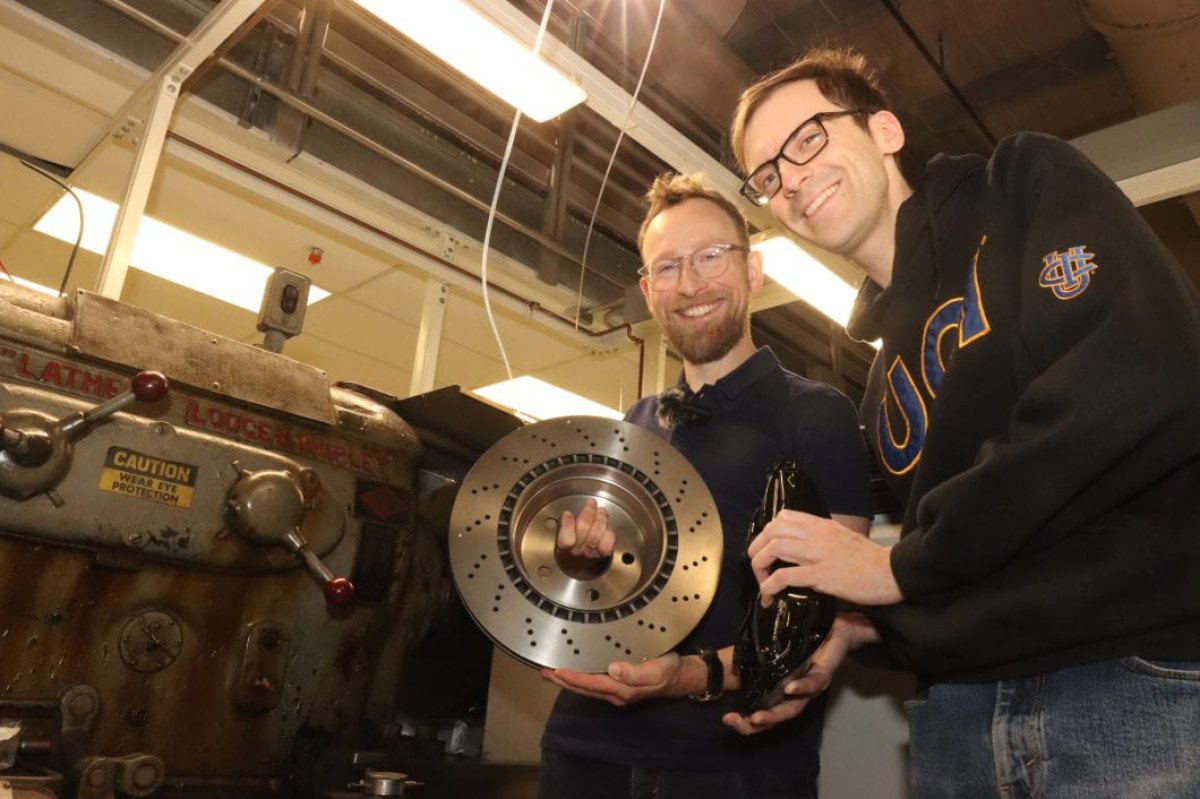While braking in your car may protect you from accidents and save your life, it could actually be harmful to your health in other ways, new research has found.
Particles released into the air as vehicles brake may be more damaging than those coming out of the exhaust, according to a study in the journal Proceedings of the National Academy of Sciences. The particles are electrically charged, however, meaning that we might be able to remove such pollution from the air.
According to the paper, brake-wear particles make up around 55 percent of non-exhaust pollution mass, and as much as 21 percent of total traffic-related pollution particle mass. Around 35 percent to 55 percent of these particles become airborne, and they can be breathed in by people, or absorbed into soil or aquatic environments.
ISTOCK / GETTY IMAGES PLUS
“The toxicity and health effects of brake wear particles are largely unknown,” paper co-author Manabu Shiraiwa, a professor of aerosol chemistry at the University of California, Irvine (UCI), said in a statement. “Recent results from my lab indicate that they may induce oxidative stress, but more research is needed.”
Car brakes work by using friction to slow down or stop the vehicle. This friction generated during braking converts the kinetic energy of the moving vehicle into heat energy, but also shears off particles from the brake pads.
The fact that these particles are electrically charged is a good thing for us, however, as it may mean they are more easily removed from the air than neutral particles.
“We found that up to 80 percent of aerosol particles emitted from braking are electrically charged, and that many of them are in fact highly charged,” co-author Adam Thomas, a doctoral candidate at UCI, said in the statement.
In the paper, the researchers described how they generated these brake particles using a lathe to spin a detached brake rotor, finding that a large proportion of the particles were indeed electrically charged.
“I was very surprised,” paper author Jim Smith, a professor of chemistry at UCI, said in the statement. “We were also surprised that this has not really been studied given how common cars are in human societies.”
The level of charged particles in the brake emissions depended on what the brake pads were made of.
“If they are charged, they can be removed easily from the air before they have a chance to have an impact at all on health,” said Smith. “All you would need to do is to collect them with an electrostatic precipitator – a device that exposes the charged particles to an electric field and efficiently sweeps them away.”

Lucas Van Wyk Joel / UCI
This is especially important considering the fact that areas with more cars—and therefore more emissions from braking and exhaust—are often mostly lived in by lower-income earners, who will bear the brunt of the health effects of the pollution.
“These areas are often in poorer communities and highlight an important aspect of environmental justice that has been largely overlooked,” paper co-author Barbara Finlayson-Pitts, an emeritus professor of chemistry at UCI, said in the statement.
Do you have a tip on a science story that Newsweek should be covering? Do you have a question about pollution? Let us know via [email protected].
Uncommon Knowledge
Newsweek is committed to challenging conventional wisdom and finding connections in the search for common ground.
Newsweek is committed to challenging conventional wisdom and finding connections in the search for common ground.


